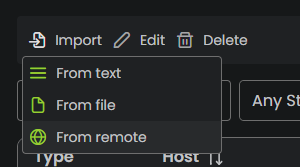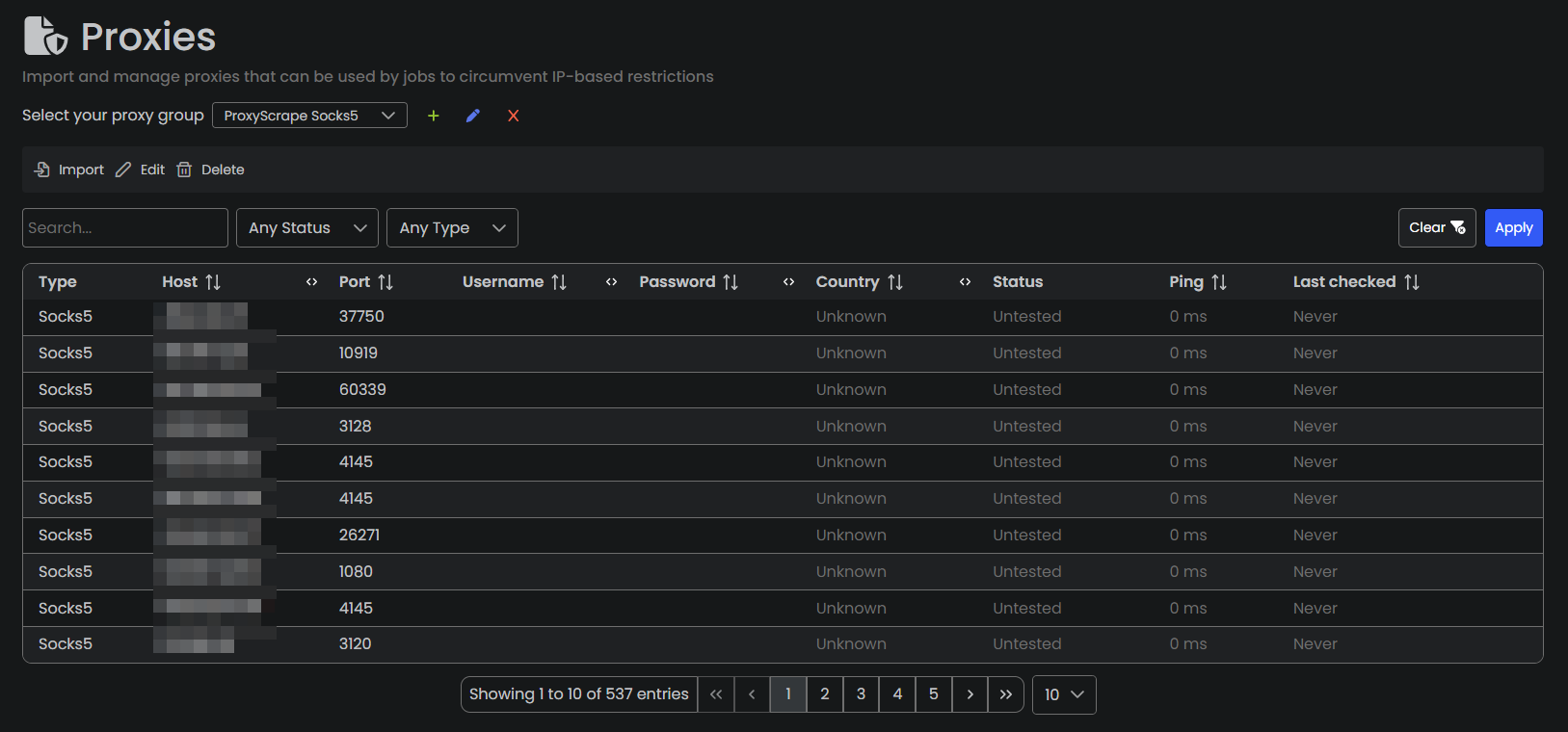Import proxies
Creating a proxy group
Go to the Proxies section of OpenBullet 2. You will see a group of settings to manage proxy groups. Proxy groups are a way to separate proxies into different groups, so that jobs can use one or more group, and different jobs are allowed to use any groups of proxies at the same time without conflicts.
You will need to create a proxy group and give it a name. Once you created a proxy group, you can import sone proxies, which will be added to the selected group.

Different ways to import proxies
There are 3 ways to import proxies in OpenBullet 2. You can add them:
- 📋 From text by pasting the proxies in a textbox
- 📁 From file on your machine's drive
- 🌎 From remote by providing a remote URL
When using any of these sources, there need to be only one proxy per line.
When adding proxies, you need to either use the advanced syntax that OpenBullet 2 uses to recognize the proxy information, or specify the default values that will be used if not specified.

Proxy syntax
The advanced proxy syntax is
(type)host:port:username:password
for example, if you have a SOCKS 5 proxy listening at 127.0.0.1 on port 8080, which requires the username myuser and password mypass you can type
(socks5)127.0.0.1:8080:myuser:mypass
Note that a proxy does not need to have all these values. For example, you can just write the host and port, and specify the protocol type through the default type selector, and it will assume that the proxies does not need authentication and that they all have a given protocol. This means you can also write proxies like this
127.0.0.1:8080
Final result
This is the result after importing the SOCKS 5 freebies from proxyscrape.com
